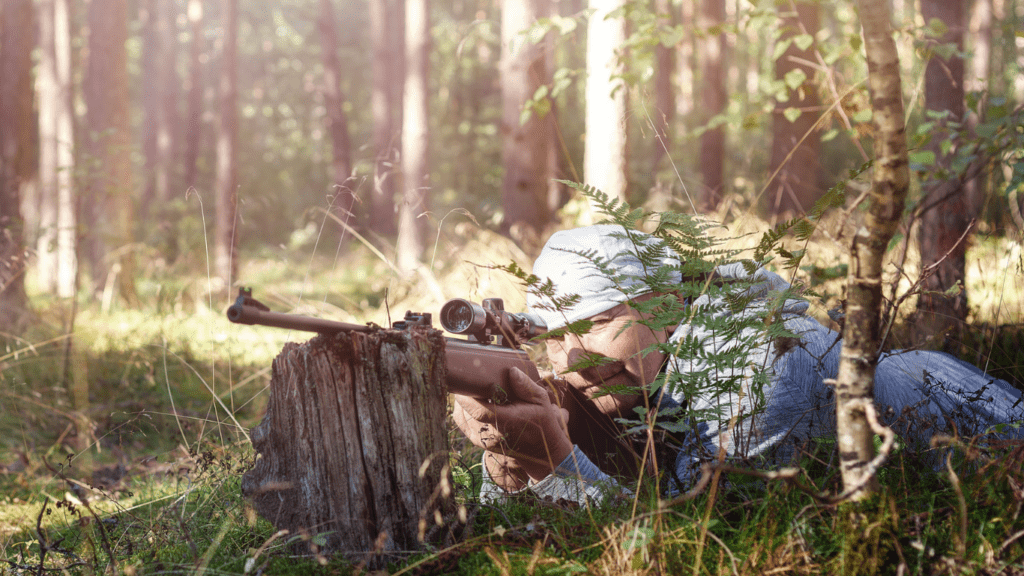Heading into the wilderness for a hunting expedition is a thrilling experience, but it comes with a responsibility to ensure ethical practices throughout. Tracking wounded game is a crucial skill that every hunter should master to minimize suffering and respect the wildlife they pursue. In this article, I’ll delve into essential techniques for tracking wounded game that not only enhance your hunting success but also uphold ethical standards.
From understanding blood trails to interpreting animal behavior, tracking wounded game requires a blend of patience, observation, and expertise. As an experienced hunter, I’ve honed these skills over the years and am excited to share insights that can benefit both novice and seasoned hunters alike. By following these proven techniques, you’ll not only improve your tracking abilities but also demonstrate a deep commitment to ethical hunting practices in the great outdoors.
Understanding Ethical Hunting
In ethical hunting, ensuring a quick and humane kill is paramount. It’s crucial to respect wildlife, minimize suffering, and utilize every method to track wounded game effectively. Ethical hunters must possess patience, sharpen their observation skills, and acquire expertise in reading blood trails and understanding animal behavior.
By understanding the principles of ethical hunting, hunters can enhance their tracking abilities while upholding respect and reverence for the natural world. It’s essential to strive for swift, clean kills to honor the animals we pursue and to maintain the balance of nature. I’ll delve into specific techniques and practices that promote ethical hunting and responsible wildlife management throughout this article.
Key Principles of Tracking Wounded Game
As an experienced hunter, I emphasize the importance of mastering the skill of tracking wounded game. Understanding key principles ensures a quick and humane approach to hunting while showing respect for wildlife.
- Identifying Proper Shot Placement
Proper shot placement is crucial for ethical hunting. Aiming for vital organs like the heart and lungs ensures a quick and humane kill. By targeting these areas, hunters can minimize suffering and increase the chances of a successful hunt. - Recognizing Signs of a Good Hit
Recognizing signs of a good hit is essential for tracking wounded game. Look for immediate indicators such as a clean shot, animal reaction, and blood trails. Paying close attention to these signs helps hunters determine the effectiveness of their shot and track the wounded animal efficiently.
Tools and Equipment for Tracking
In tracking wounded game, having the right tools and equipment can significantly improve your ability to follow the trail effectively. Here are essential items that I recommend every hunter to have for successful tracking:
1. Tracking Lights:
Having a reliable tracking light is crucial, especially when pursuing wounded game in low light conditions. Opt for a high-quality, long-lasting tracking light that can help you spot blood trails and tracks even in the dark.
2. Blood Tracking Gear:
Carry blood tracking gear such as luminol spray or specialized glasses that can enhance your visibility of blood trails. These tools can make it easier to detect blood droplets, even on challenging terrains.
3. Tracking Dog Supplies:
If you utilize a tracking dog in your hunting expeditions, ensure you have the necessary supplies such as a leash, harness, and dog first aid kit. Properly equipping your tracking dog is essential for maximizing their tracking abilities.
4. Binoculars or Scope:
Binoculars or a scope are handy for scanning the surroundings and spotting game from a distance. These optical tools can help you assess the trail ahead and plan your tracking strategy effectively.
5. Navigation Tools:
Carry navigation tools like a GPS device or compass to stay oriented while tracking wounded game. Knowing your location and the direction you are heading is crucial for staying on the trail and avoiding getting lost.
6. First Aid Kit:
Always have a well-equipped first aid kit with you to handle any emergencies or injuries that may occur during the tracking process. Being prepared to address health issues promptly is vital for ensuring a safe hunting experience.
By ensuring you have the right tools and equipment for tracking wounded game, you can enhance your tracking skills and increase the chances of a successful hunt while maintaining ethical hunting practices.
Tips for Effective Tracking in Various Environments
Engaging in ethical hunting practices requires me to master the art of tracking wounded game effectively. To achieve this, it’s crucial to consider various tips for successful tracking in different environments. Here are essential guidelines to enhance your tracking skills:
1. Understanding Terrain and Habitat Features
Navigating diverse terrains and habitats demands a keen understanding of the environment. Each setting presents unique challenges, from dense forests to open fields. By familiarizing yourself with the topography, vegetation, and potential hiding spots of the game, you can anticipate their movements and locate them more efficiently.
2. Aiding Techniques with Technology
Utilizing technology can significantly improve tracking outcomes. Tools such as GPS devices, trail cameras, and thermal imaging equipment can enhance your tracking capabilities, especially in low-light conditions or dense vegetation. Incorporating these technologies can provide valuable insights and increase the likelihood of a successful track.
3. Adapting Tracking Methods to Weather Conditions
Weather conditions play a crucial role in tracking wounded game. Rain can wash away blood trails, while wind can distort scent paths. It’s essential to adapt your tracking techniques accordingly. During adverse weather, consider focusing on visual clues, such as broken branches or disturbed foliage, to trace the game’s movements accurately.
4. Utilizing Animal Behavior Knowledge
Understanding animal behavior patterns is key to effective tracking. Different species exhibit distinct behaviors when injured, affecting how they flee or seek shelter. By studying the behavior of the game you’re pursuing, you can predict their actions post-injury and strategize your tracking approach accordingly.
5. Employing Scent-Masking Techniques
Animals have a keen sense of smell, making scent control crucial during tracking. Utilize scent-masking sprays or clothing to reduce your odor footprint and avoid alerting the wounded game. Minimizing your scent presence can increase the likelihood of getting closer to the target without detection.
6. Collaborating with Tracking Dogs
Incorporating well-trained tracking dogs can significantly aid in locating wounded game. Dogs have a superior sense of smell and can follow scent trails that may be challenging for humans to discern. Collaborating with tracking dogs can expedite the tracking process and enhance the chances of recovering the injured animal.
7. Maintaining Patience and Persistence
Effective tracking requires patience and persistence. Following a blood trail or visual cues may take time, especially in complex terrains. It’s essential to remain focused, methodical, and patient throughout the tracking process. By staying persistent and thorough, you enhance your chances of locating the wounded game successfully.
By implementing these tips and techniques tailored to different environments, I can enhance my tracking abilities and contribute to ethical hunting practices. Mastering the art of tracking wounded game is not only essential for a successful hunt but also for demonstrating respect towards wildlife and upholding ethical standards in hunting.


 Dominic Reed brings his extensive experience in outdoor survival and adventure sports to Terra Tactician Tactics, where he plays a crucial role in the platform's development. With a background in outdoor education and a deep love for wilderness exploration, Dominic is committed to creating content that inspires and informs readers. He specializes in writing articles on survival skills, advanced camping techniques, and gear recommendations, drawing from his own adventures and hands-on expertise. Dominic's practical approach and engaging storytelling help readers prepare for their outdoor pursuits, ensuring they are well-equipped for whatever nature throws their way.
In addition to his writing, Dominic actively collaborates with the team to expand the platform's reach and impact. He is passionate about connecting with the outdoor community and sharing his knowledge with those eager to learn more about survival tactics and adventure sports. His contributions have been instrumental in positioning Terra Tactician Tactics as a go-to resource for enthusiasts seeking to elevate their outdoor experiences. Dominic's dedication to the project is driven by his belief in the transformative power of nature and his desire to help others develop a deeper connection to the wild.
Dominic Reed brings his extensive experience in outdoor survival and adventure sports to Terra Tactician Tactics, where he plays a crucial role in the platform's development. With a background in outdoor education and a deep love for wilderness exploration, Dominic is committed to creating content that inspires and informs readers. He specializes in writing articles on survival skills, advanced camping techniques, and gear recommendations, drawing from his own adventures and hands-on expertise. Dominic's practical approach and engaging storytelling help readers prepare for their outdoor pursuits, ensuring they are well-equipped for whatever nature throws their way.
In addition to his writing, Dominic actively collaborates with the team to expand the platform's reach and impact. He is passionate about connecting with the outdoor community and sharing his knowledge with those eager to learn more about survival tactics and adventure sports. His contributions have been instrumental in positioning Terra Tactician Tactics as a go-to resource for enthusiasts seeking to elevate their outdoor experiences. Dominic's dedication to the project is driven by his belief in the transformative power of nature and his desire to help others develop a deeper connection to the wild.